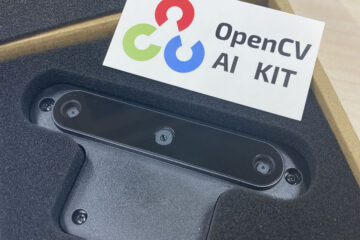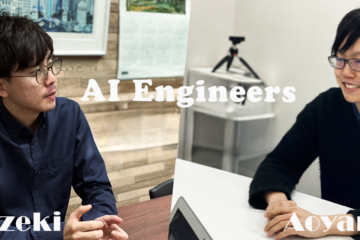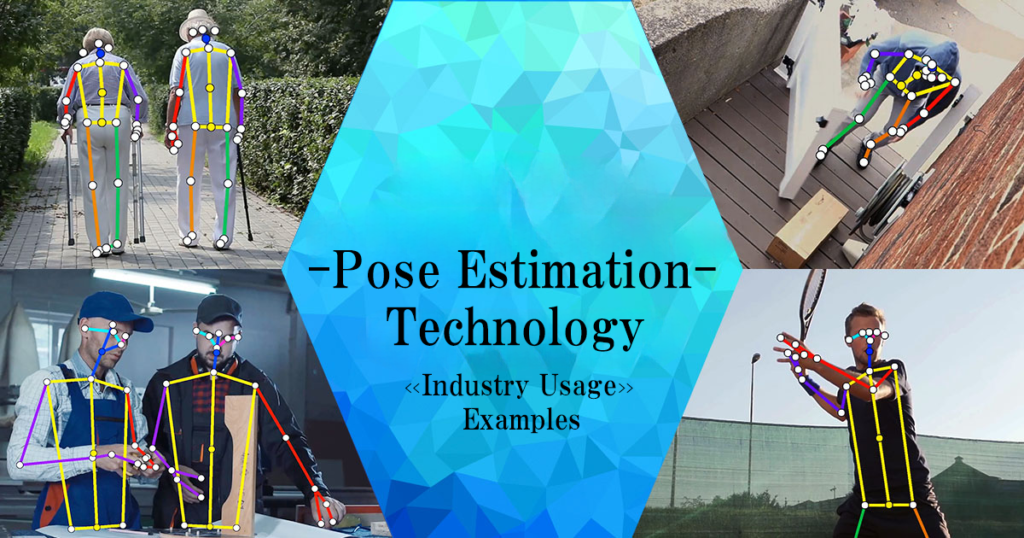
In recent years, with the advancement of AI-related technologies such as Deep Learning, various products utilizing the technology to detect skeletal data of individuals, known as Pose Estimation, have emerged.
Pose Estimation, also known as Human Skeleton Detection technology, involves detecting key points such as joints in a person’s body using coordinate data. When it comes to digitizing and utilizing human behavior/actions and postures as data, what are some ways in which this technology can be applied?
In what Industries and Applications is Posture Estimation used?
In a broad sense, when categorized by industry, pose estimation is widely used in industrial sectors (manufacturing, construction, etc.), sports, research and education, entertainment, and healthcare and rehabilitation. When categorized by applications (purpose of use), it is often used for posture assessment, motion capture, anomaly detection, and performance evaluation. It is widely used in various industries.
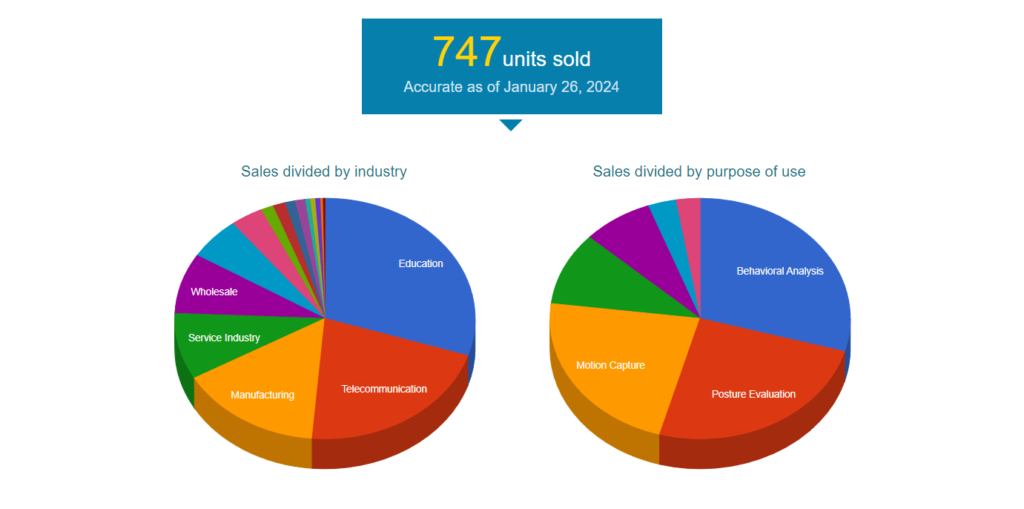
Applications in Manufacturing
To visualize the physical strain on workers
Recently, there has been an aging workforce, and a challenge is that tasks have become more specialized, making physical strain less visible. Therefore, it is crucial to create a conducive work environment that reduces physical strain.
By using pose estimation technology, real-time measurement of workers’ posture information can be achieved through web cameras or network cameras. In addition, there is no need to attach machines or devices to workers’ bodies, reducing the burden on workers.
Visualizing the postural strain on workers and re-evaluating work methods and spaces can help prevent health issues such as back pain, while improving safety management and worker retention.
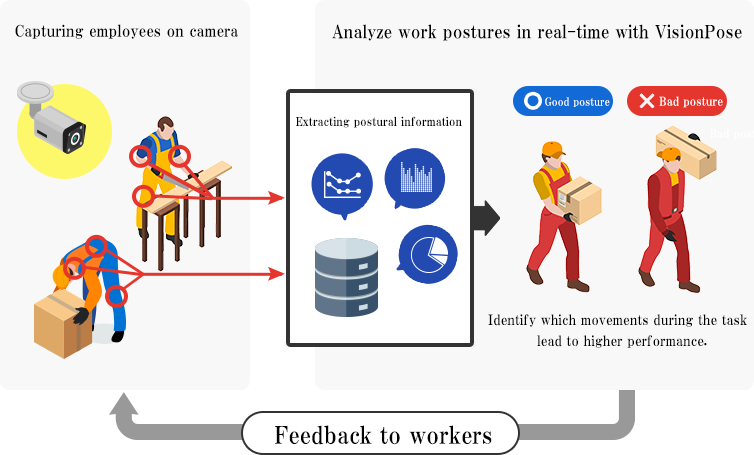
To visualize the actions of the workers
This is similar to the previous case, but worker tasks and processes tend to be unclear, and on-site management has become personalized, making it difficult for issues to surface.
By analyzing with pose estimation technology, it is also possible to issue alerts when workers perform actions (such as using smartphones) that differ from the manual.
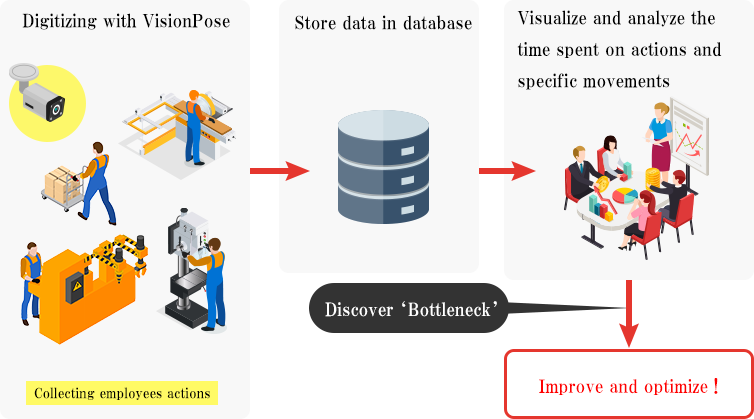
To inherit the skills of Veteran Workers
With the aging workforce and increasing employment of overseas talent, there is a rising concern about labor shortages. As the number of veteran workers decreases, there is a fear of a decline in quality. Therefore, optimizing the training of new employees is essential.
Hence, it is necessary to analyze and digitize the tasks of veteran workers using pose estimation technology, compare them with the movements of new employees, and optimize operations to achieve improvement in actions and overall efficiency.
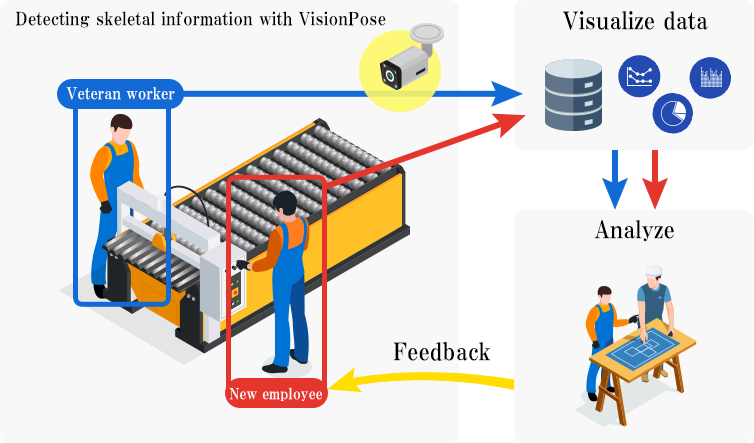
Applications in Sports Industry
Applications in Sports Industry
To standardize and improve efficiency through automated scoring
In competitive activities such as dance, specialized expertise is often required for scoring, and human evaluations can vary. By quantifying skeletal information through pose estimation technology, the scoring criteria become consistent, eliminating the need for specialized expertise and enabling automated scoring, reducing manual effort.
Avex Management Inc. has released the ‘Avex Street Dance Certification Test’ app, utilizing video analysis and data science to achieve quantitative evaluation of dance skills.
▼Click here for more details.
To prevent injuries and manage physical conditions
It can also be used for predicting and avoiding injuries, as well as maintenance of overall physical condition.
In fact, the Sports Science Laboratory, a general incorporated association, has used pose estimation technology to study the correlation between pitching motions and pitching-related injuries in youth baseball players. They analyzed a database of over 4,000 baseball players to derive the relationship between pitching motions and pitching injuries.
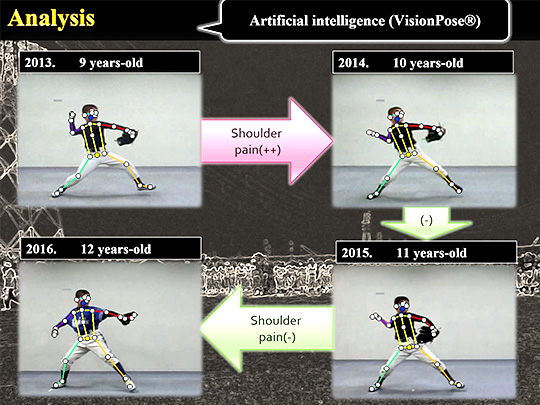
▼For more information, please click the link down below.
To enhance performance through form analysis
Recognizing ingrained habits can be challenging, and in the case of professional athletes, even a few centimeters of form error can negatively impact performance.
If skeletal information can be quantified, differences between one’s regular self and that of a professional become evident at a glance. By comparing posture information, one can identify areas for correction by comparing their own form to the ideal form. This allows for efficient management of condition and correction of bad habits.
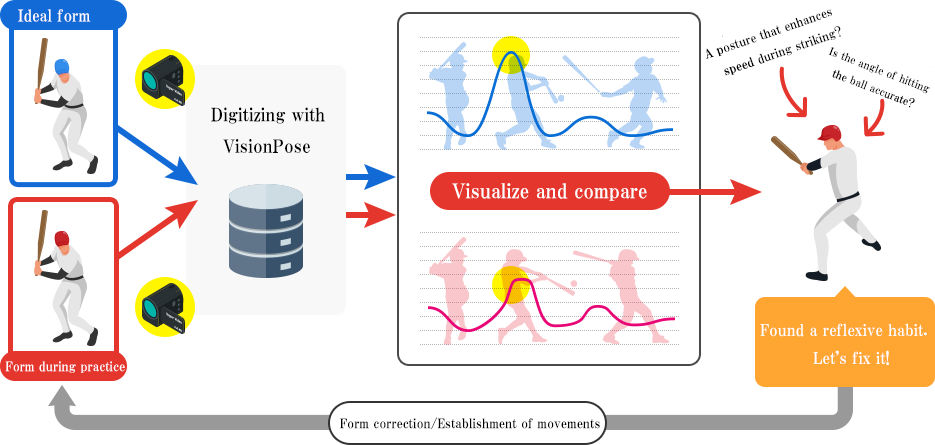
For Medical, Rehabilitation, and Healthcare Industries
To support rehabilitation by quantifying posture information
In the field of rehabilitation, the automation of posture quantification and evaluation through AI is expected to reduce the daily measurement tasks effortlessly. The ability to measure with the same indicators seems to be helpful to avoid variations in evaluations.
Toyota Motor Corporation has utilized pose estimation technology in their robot ‘Welwalk WW-2000,’ designed to support rehabilitation for lower limb paralysis.
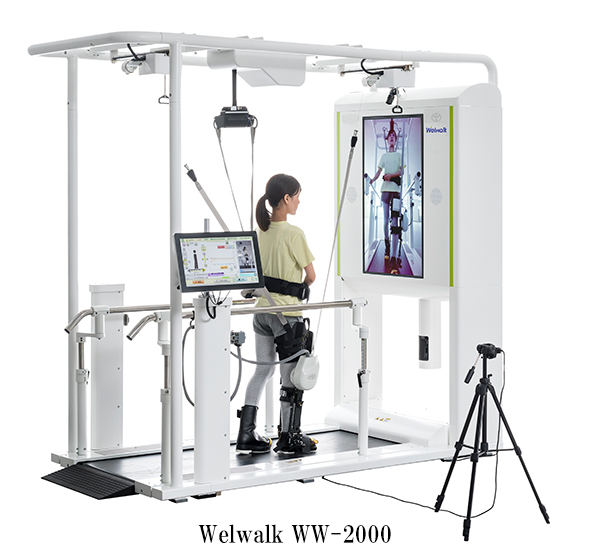
▼Click here for more details.
To visualize rehab and healthcare progress
Poor posture can lead to various issues such as shoulder and lower back pain, causing several negative impacts on the body. However, self-assessing correct posture is challenging.
By quantifying posture information and visualizing the deviation from the correct posture makes it easier to identify which aspects of our posture need improvement. Visualization enhances customer motivation, and since the measurement is automated by simply standing in front of a camera, it eliminates the hassle of manual measurements.
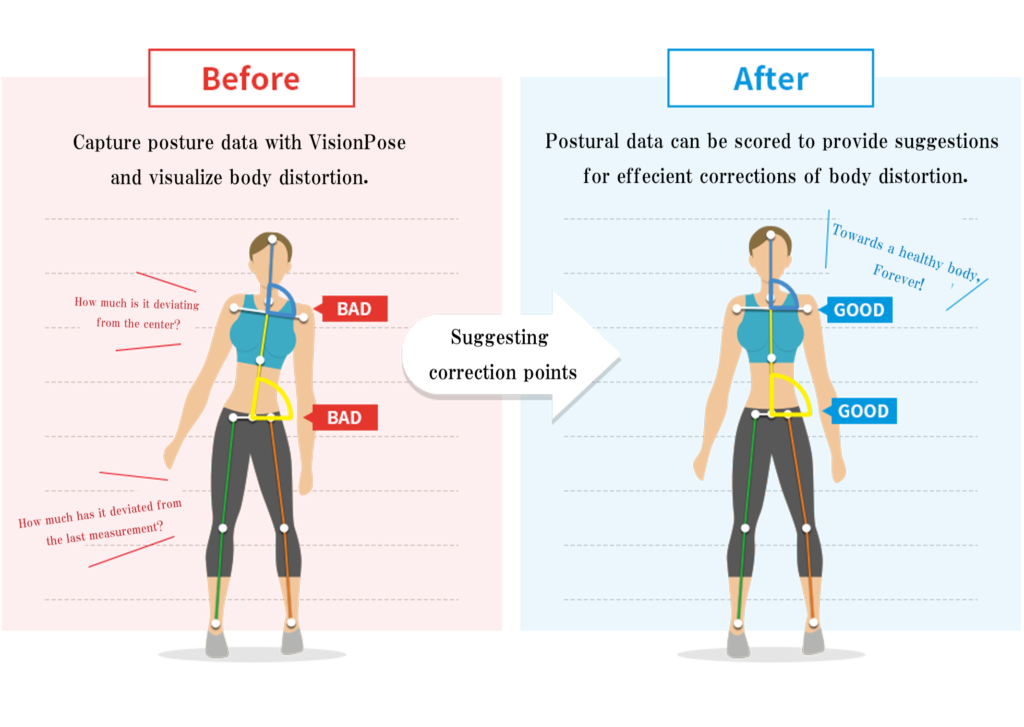
▼Demonstration of an app developed by us that can measure and record posture.
To reduce the burden on caregivers by detecting risky behaviors
In recent years, the shortage of caregivers has become increasingly severe, with over 60% experiencing it. In this context, there is a growing demand for prompt response to unforeseen accidents such as falls and unauthorized outings by dementia patients. By using pose estimation technology to monitor the behavior of patients, early detection of these accidents can be anticipated.
Although the discussion slightly deviates from medical and rehabilitation topics, this technology seems applicable to various settings, including medical employment support facilities, daycare centers, and kindergartens.
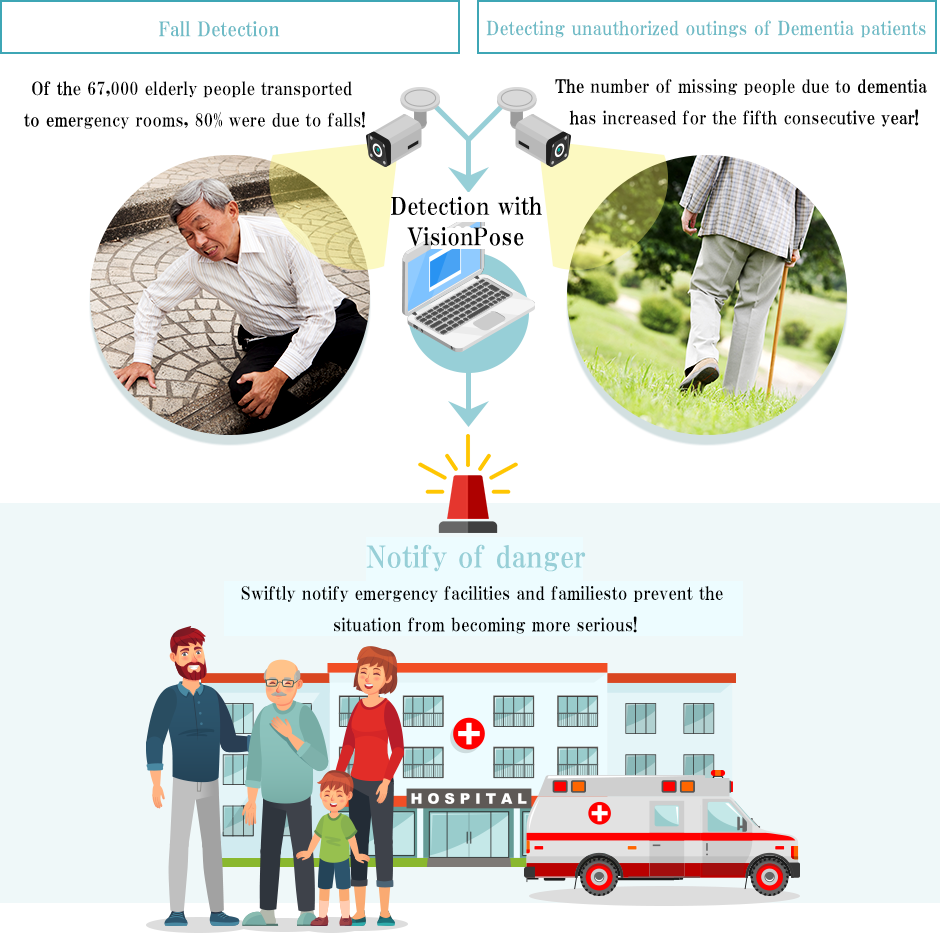
▼Demo for Detecting Dangerous Behaviors in Toddlers
For Retail Industry
To perform touchless operations hygienically using gestures
Various devices, such as information terminals for floor guidance, are used in different locations for touch-based operations. However, touch-based interactions are often avoided due to hygiene concerns.
By leveraging pose estimation technology, body movements can be detected from the customer’s skeletal information, enabling touchless operations through gestures. This approach is hygienic as there is no need to touch the touch panel.
In addition, the detection of body movements does not require specialized equipment such as infrared sensors; it can be achieved using a regular webcam.
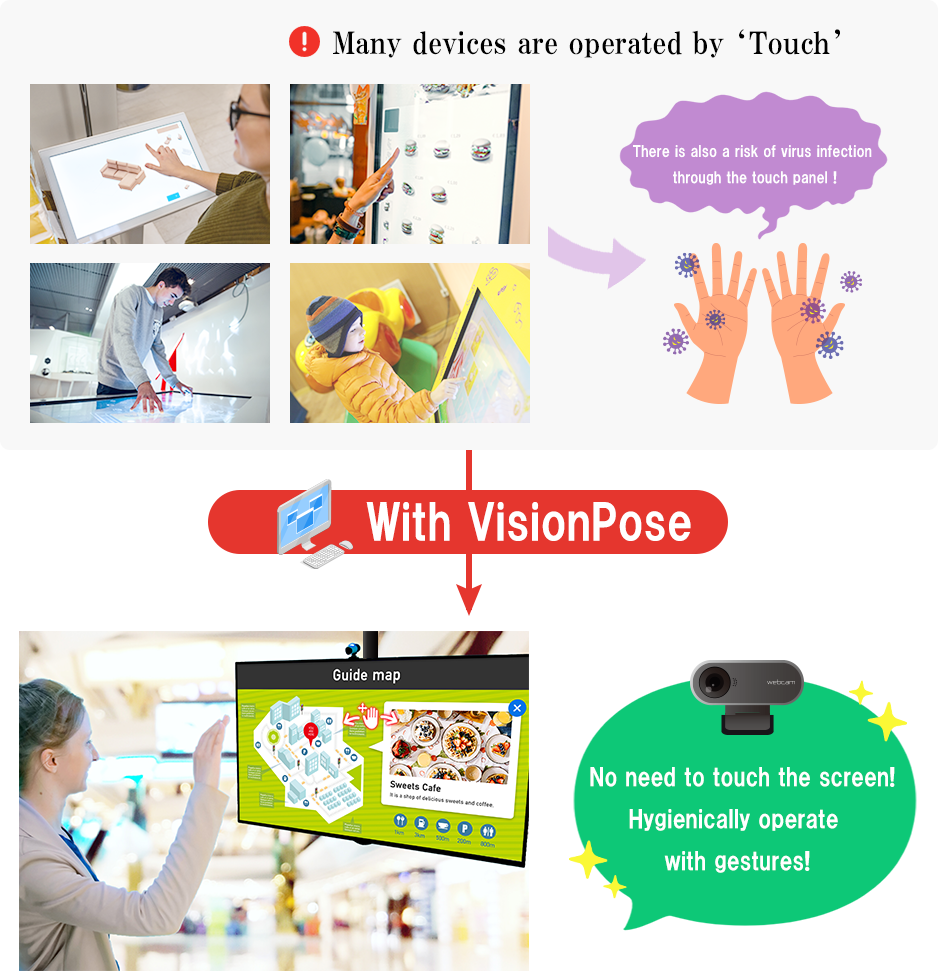
To analyze behavior using new indicators from posture data
Pose estimation technology can also be applied to the analysis of purchasing behavior based on customer posture information, such as ‘picking up a product,’ ‘returning a product,’ or ‘undecided about a purchase’, which were previously difficult to analyze.
Customer behavior can be analyzed using new indicators that could not be read using only existing data, such as POS data, and it is possible to leverage these insights for sales promotion.
Moreover, since posture information can be automatically detected using only videos, the data collection process becomes effortless. It can also be detected from pre-existing footage captured in the past.
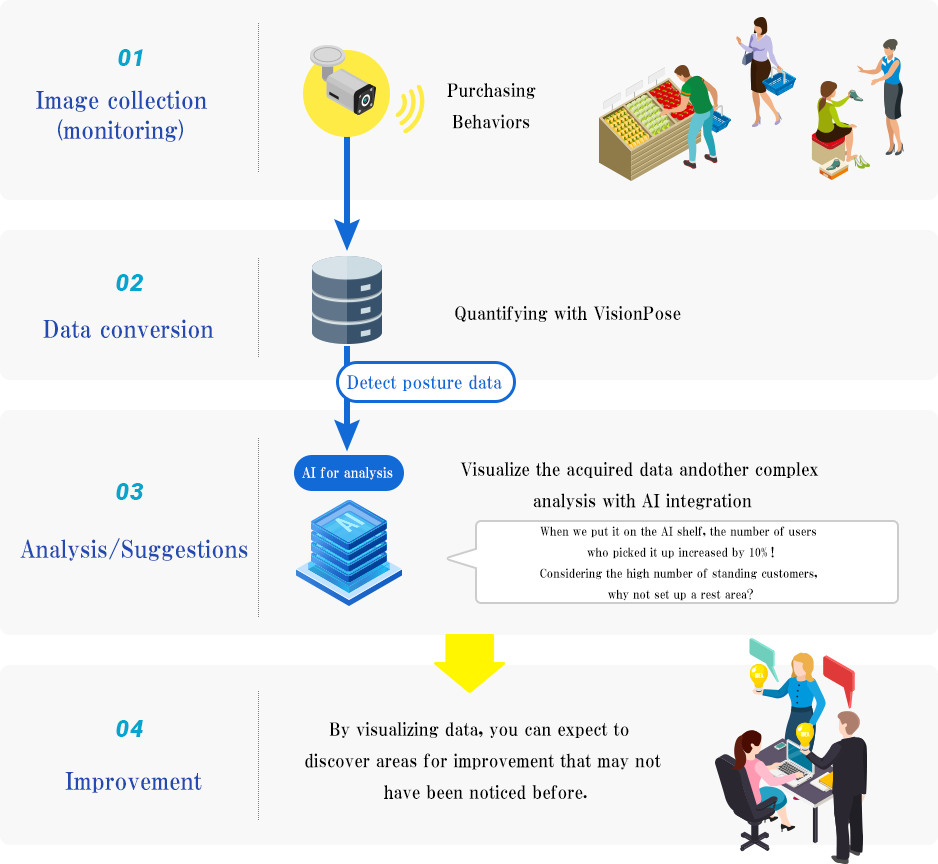
To detect prohibited activities to support security operations
From the obtained posture information, prohibited behaviors such as eating, talking on the phone, and smoking can be detected. Furthermore, the system can automatically detect in real time and immediately notify security guards and store personnel. The system is expected to be used to support security operations.
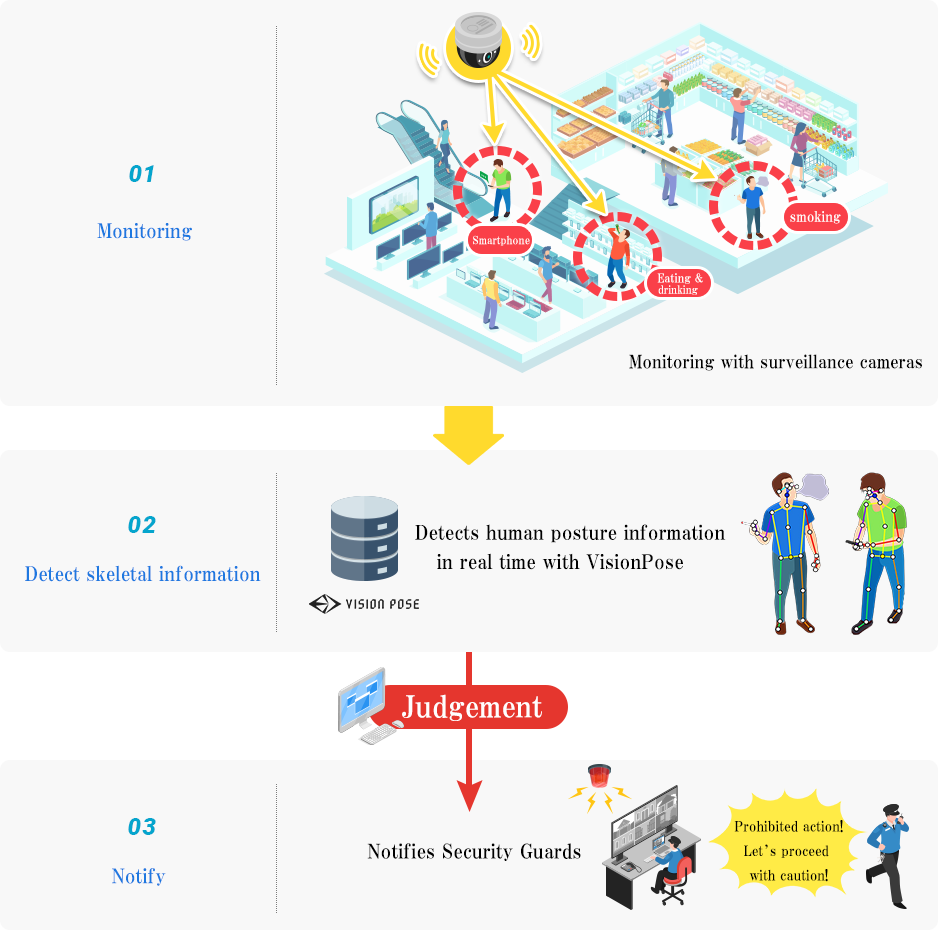
For Entertainment Industry Use
To perform touchless operations on gaming devices hygienically with gestures
Various devices in amusement facilities, including game systems in game centers, involve touch-based operations. The touchless transformation of touch panels can also be used in the entertainment sector.
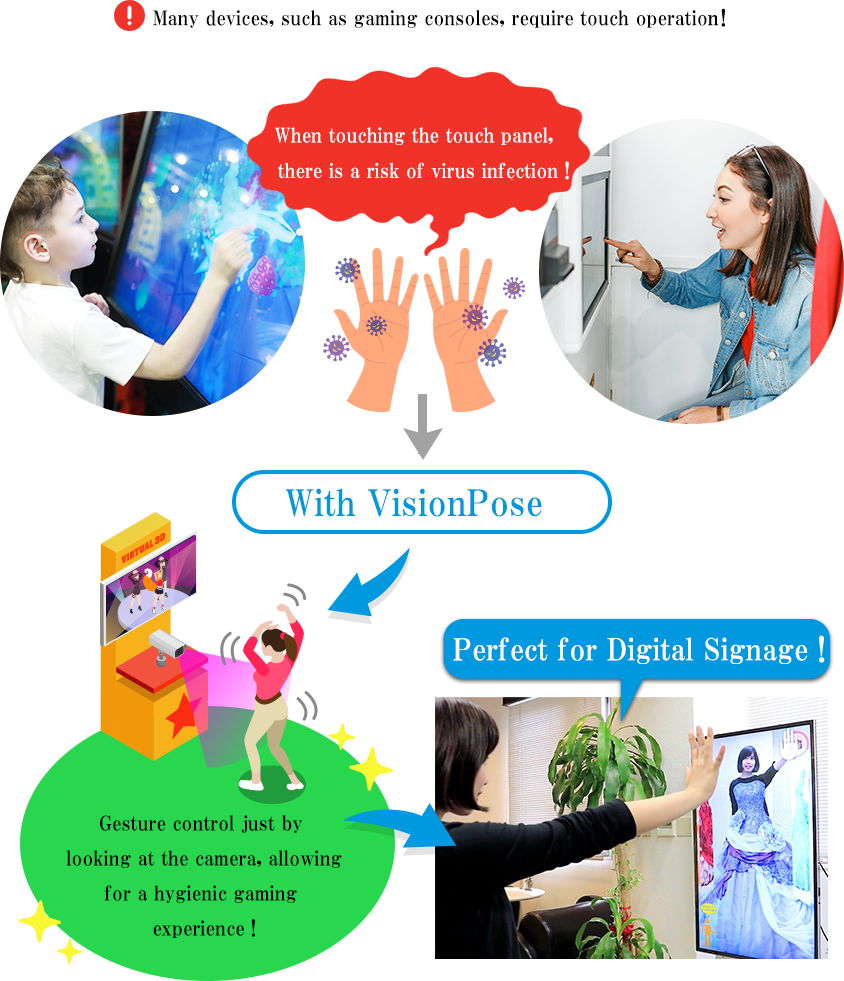
▼Demo of gesture operation on Digital Signage
Full-body tracking with just a camera for VTubers and Motion Production, etc.
Typically, motion capture requires equipment to be attached to the body. However, professional motion capture systems can be expensive and may not be easily accessible.
On the other hand, pose estimation technology allows for full-body motion tracking using just cameras, eliminating the need to attach equipment to the body. It’s convenient, easy, and cost-effective. Some systems even support smartphones, making them suitable for mobile application development.
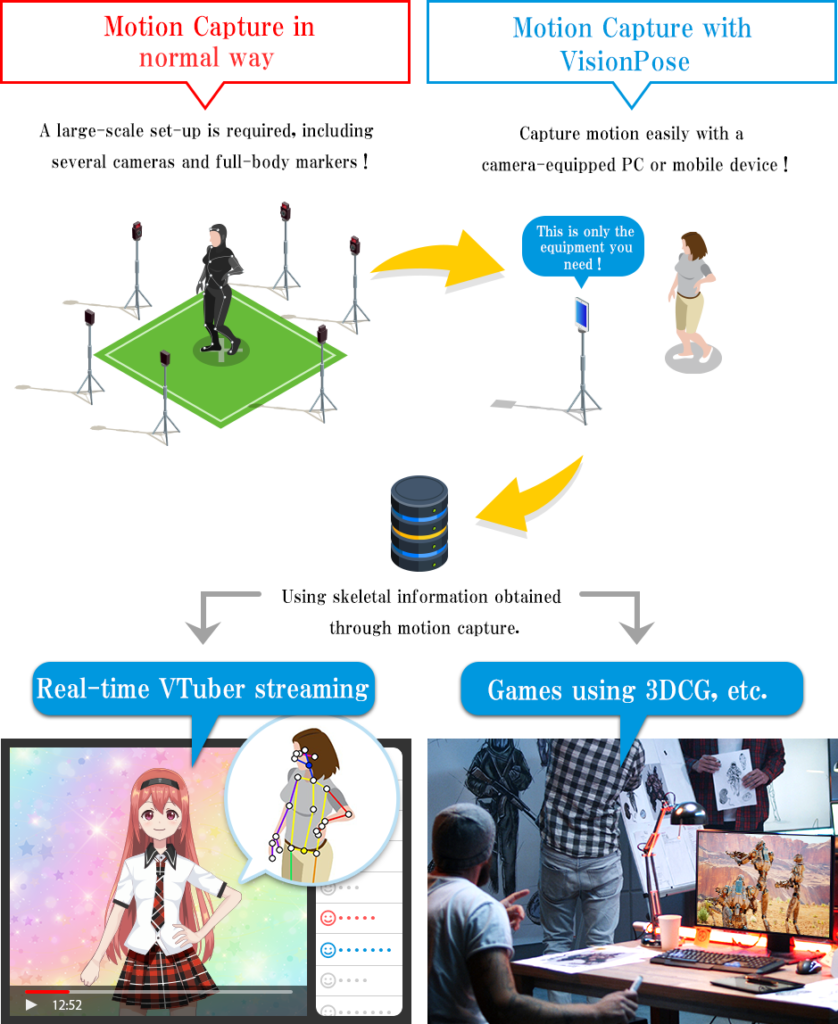
▼MICHICON-Plus, an app that allows a full-body motion capture of 3D characters using only a smartphone.
New creative techniques for Stages, Live, and Threatres
By synchronizing the movements of performers detected through pose estimation technology with effects, new creative effects can be applied in various settings such as stages, live performances, and theaters.
One of the advantages is that there is no need for performers to wear equipment on their bodies, avoiding interference with costumes and performances.
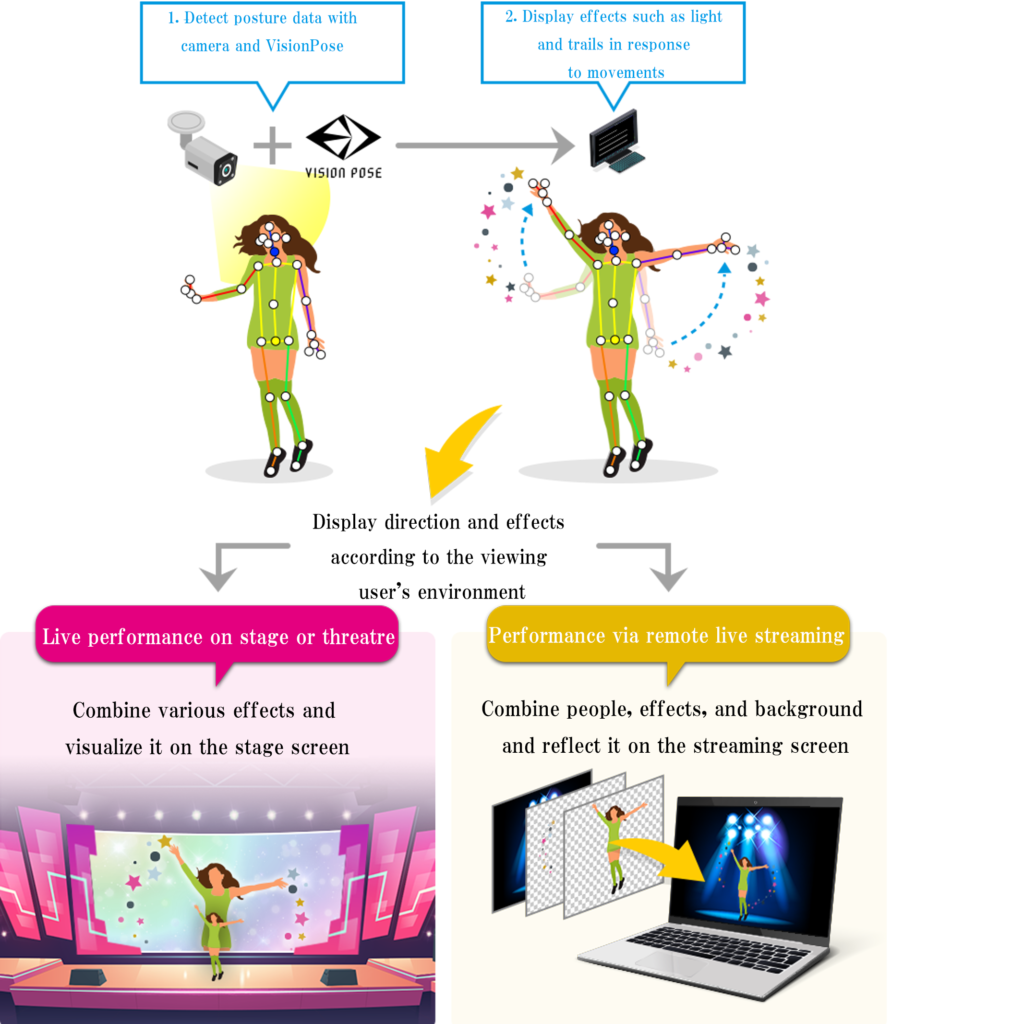
■ While summarizing across various industries, the benefits of pose bestimation technology are as follows:
- Real-time Skeleton Detection
- Utilizes Still Images and Videos Captured in the Past
- No need to attach any equipment to the body
- High compatibility with other software, making it easily applicable
Which companies offer consultation for service development using Skeletal Data?
Our company, Next System, headquartered in Fukuoka, has developed a unique Pose Estimation AI Engine called ‘VisionPose.’
Briefly summarizing the advantages of VisionPose:
- Cost-effective
- Available for commercial use with a one-time purchase
- No usage restrictions, suitable for commercial applications
- Support available in English and Japanese
- Allows Additional Training
Although, I’ve listed additional learning as an advantage, but typically, AI is trained to learn on everyday movements to make it versatile. However, for certain postures, such as a Bridge Pose, which wouldn’t be considered a daily movement unless possessed by a demon like in the movie ‘The Exorcist’. In such cases, there is a tendency for a decrease in detection accuracy.
To specialize in specific movements, additional training is required. Even the tech giants like Google or Apple, with their pose estimation technology, might find it challenging to accommodate requests for something specific like the ‘Bridge pose’.
However, Next System offers flexible solutions, making it possible to discuss your unique needs, such as monitoring the actions of your demon-possessed daughter and triggering an alert when she leaves the house.🤭
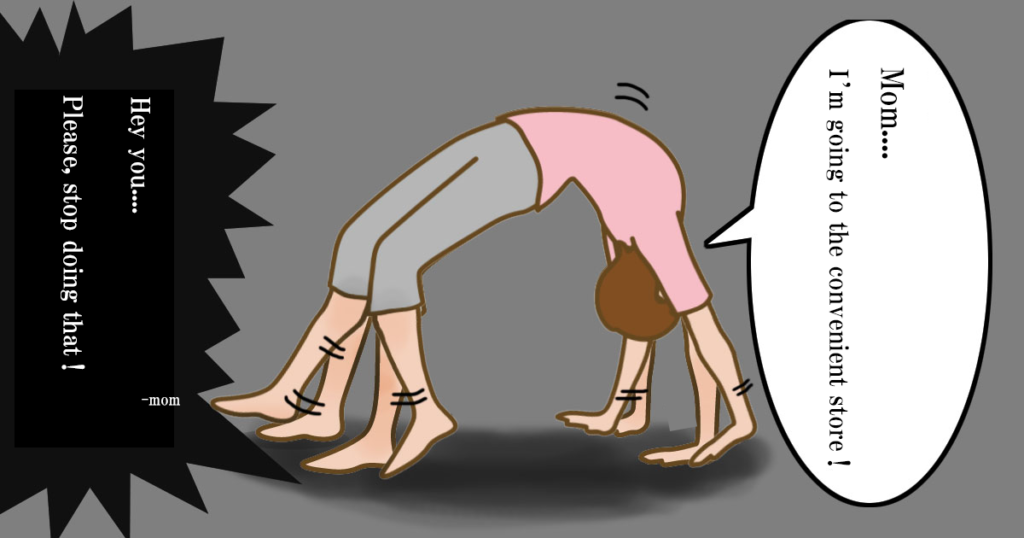
For detailed features, lineup, and pricing information about ‘VisionPose,’ please check our website.
▼VisionPose

